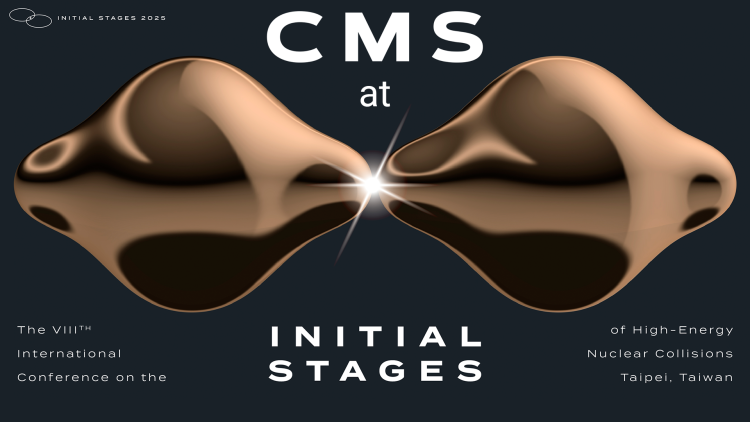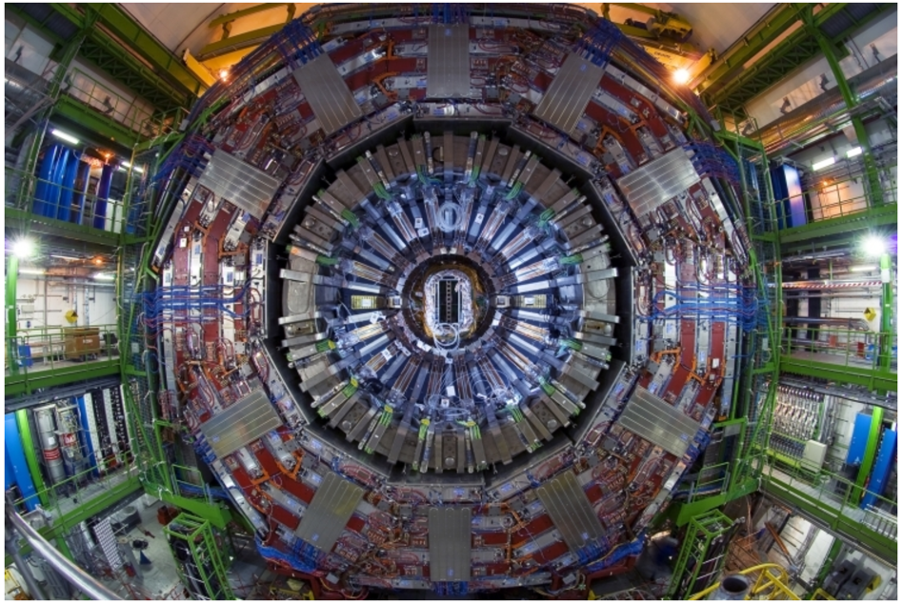
At the Initial Stages conference, CMS announces first brand new results based on the recent oxygen-oxygen and neon-neon collision data.
The new data offers unique opportunities to study the collective phenomena and initial-state effects in high-energy collisions of relatively small ions, oxygen-oxygen (OO) and neon-neon (NeNe), and to compare with observations in heavy-ion lead-lead (PbPb) collisions, and pp and pPb collisions. In PbPb collisions a quark-gluon plasma (QGP) is created, which behaves like an almost perfect liquid. By studying the properties of OO and NeNe collisions, CMS scientists are searching for the formation of a small-scale QGP.
CMS presents the following results:
The charged-particle nuclear modification factor in OO and NeNe collisions is measured and compared to that for PbPb and pp collisions [HIN-25-008, HIN-25-014]. CMS observes a suppression of about 70% at transverse momentum (pT) of about 6 GeV and no suppression at the highest pT of about 100 GeV.
The collective flow [HIN-25-009] provides information about the origin of collectivity in small collision systems. CMS measures the flow as a function of the nuclear overlap (centrality) from peripheral to central OO and NeNe collisions. Three flow observables are measured, the elliptic flow v2 for both two- and four-particle configurations and the triangular flow v3. The v2 values show a similar trend as previously observed in PbPb collisions where the values decrease towards central collisions, reflecting the initial geometry of the overlapping area of the relativistic nucleus-nucleus (AA) collisions. An increasing trend is observed for v3 values from peripheral to central collisions, in contrast with the observation in PbPb collisions, indicating different initial-state fluctuations in small and large collision systems.
The first measurements of the charged hadron pseudorapidity distributions in oxygen-oxygen collisions are presented. The data are compared to lead-lead and xenon-xenon collisions at similar collision energies and to various Monte Carlo event generators. Detailed studies of the dependence of particle production on the collision energy, initial collision geometry, and the size of the colliding nuclei are presented. In the 5% most central collisions, the charged-hadron η density in the range |η| < 0.5 is found to be 135 ± 3 (syst), with negligible statistical uncertainty. Per participant dNch/dη at midrapidity in the centrality class of 0–5% in OO is found to be consistent with that of lead-lead collisions and to be larger than that of pp collisions. The OO results provide new, system-specific constraints on theoretical models and event generators of multiparticle production in relativistic heavy-ion collisions.
Also at Initial Stages, CMS presents a new measurement of top quark production in PbPb collisions [HIN-24-021]. Using dilepton events, the cross section σ(PbPb → tt), along with its ratio to the Drell–Yan cross section, are measured and are both found to be in agreement with predictions. The measurement establishes a new higher precision for top quark physics in the study of the formation and the properties of the quark-gluon plasma in heavy ion collisions.
CMS speakers at the conference are introduced here: https://cms-hin-public.web.cern.ch/speakers/IS2025/
Here is an evolving list of all our results presented at the conference. Details of the papers and briefings will be added throughout the conference.
|
Group and identifier |
Title of the study |
Full paper/PAS |
Physics briefing |
|
HIN-24-021 |
Measurement of the top quark pair production cross section in PbPb collisions at 5.36 TeV |
|
|
|
HIN-25-008 |
Measurement of the charged particle nuclear modification factor in oxygen-oxygen collisions with CMS |
||
|
HIN-25-009 |
Collective flow in OO and NeNe collisions at 5.36 TeV |
||
|
HIN-25-010 |
Pseudorapidity distributions of charged hadrons in oxygen-oxygen collisions at 5.36 TeV |
|
|
|
HIN-25-014 |
Charged particle nuclear modification factor in neon-neon collisions and system-size dependence of nuclear suppression effects |
Read more about these results:
-
@CMSExperiment on social media: Bluesky - Facebook - Instagram - LinkedIn - TikTok - Twitter/X - YouTube

